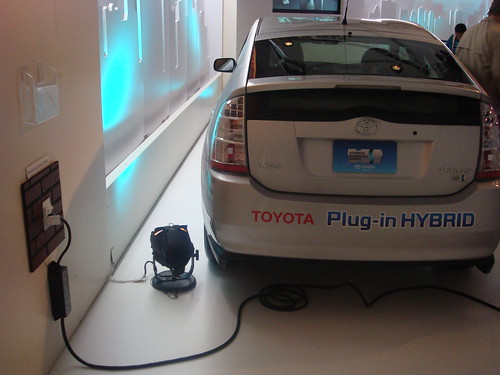(Source: Washington Post)

It was dark and rainy, and the battery on his nifty Mini E electric car was almost gone.
Paul Heitmann rolled quietly through the suburban New Jersey gloom, peering through the rain on the windshield, not sure what he was looking for, anxiety turning into panic. He needed juice. He spotted a Lukoil gas station, which was closed, and beside the point, anyway. But beyond the pumps, there was a Coke machine, and it was lit up.
“I thought ‘Finally!’ because I knew if there was light, there would be electricity,” he said. “I managed to find the outlet behind the Coke machine and plugged in.”
As many of the auto companies tell it, next year may be the year that the massive U.S. auto industry really begins to go electric.
The all-battery Leaf from Nissan is scheduled to go on sale in November. General Motors will begin selling the Chevy Volt, a primarily electric car (with a small auxiliary gasoline engine that kicks in to boost the car’s range). Ford has plans to produce an electric commercial van. The Obama administration has doled out $2.4 billion to companies involved in producing batteries and other parts of electric cars.
“We have to get on with the electrification of our industry,” William Clay Ford Jr., chairman of Ford, said during a visit to Washington on Monday.
“I know we have to have an electric car,” GM Chairman Edward E. Whitacre Jr. told reporters last week.
But overshadowing prospects for the transition of the vast U.S. auto fleet to electric — and the billions of dollars the automakers have invested in the switch — is the question of whether anyone beyond a sliver of enthusiasts will soon embrace the newfangled cars, which force drivers to rethink their habits and expectations of convenience.
Click here to read the entire article.


